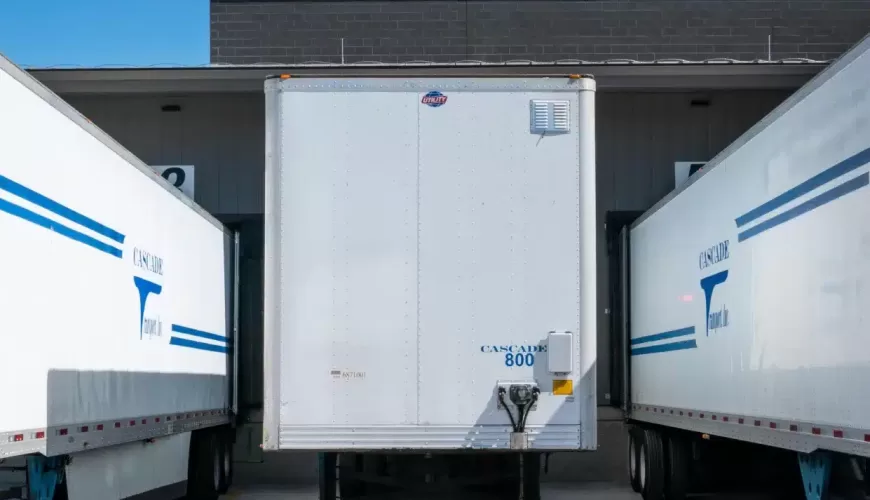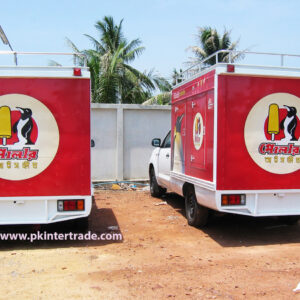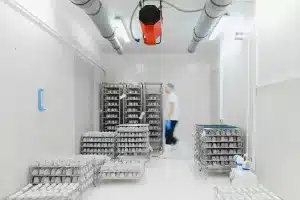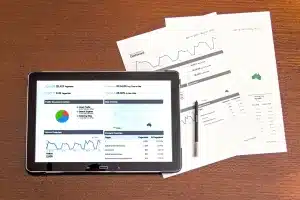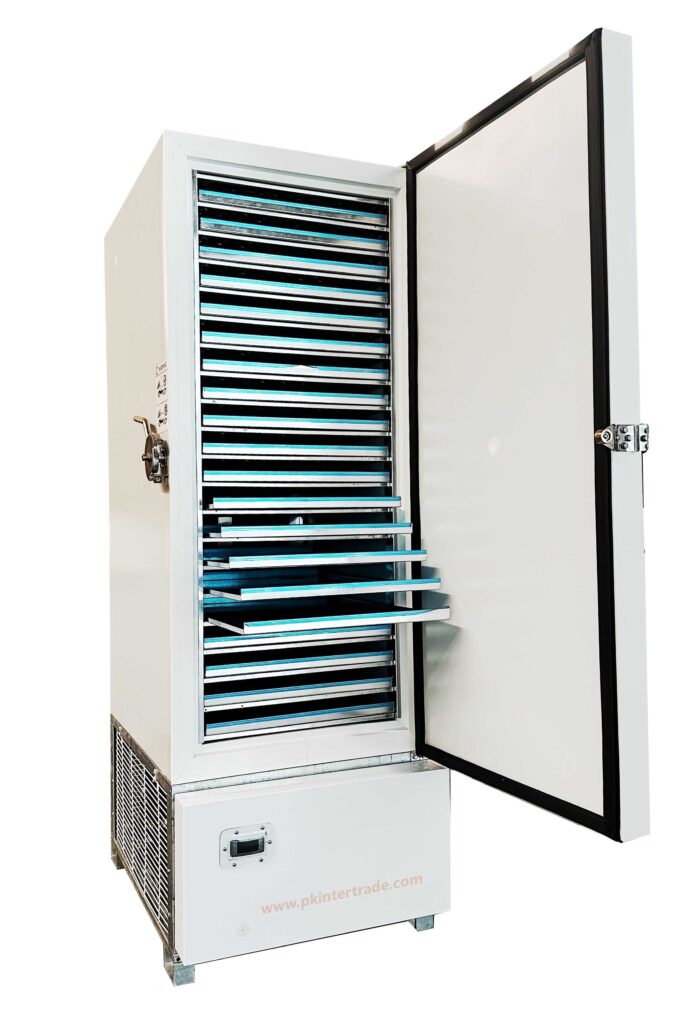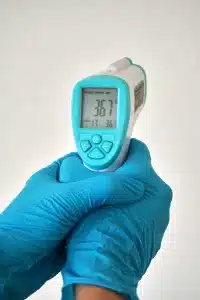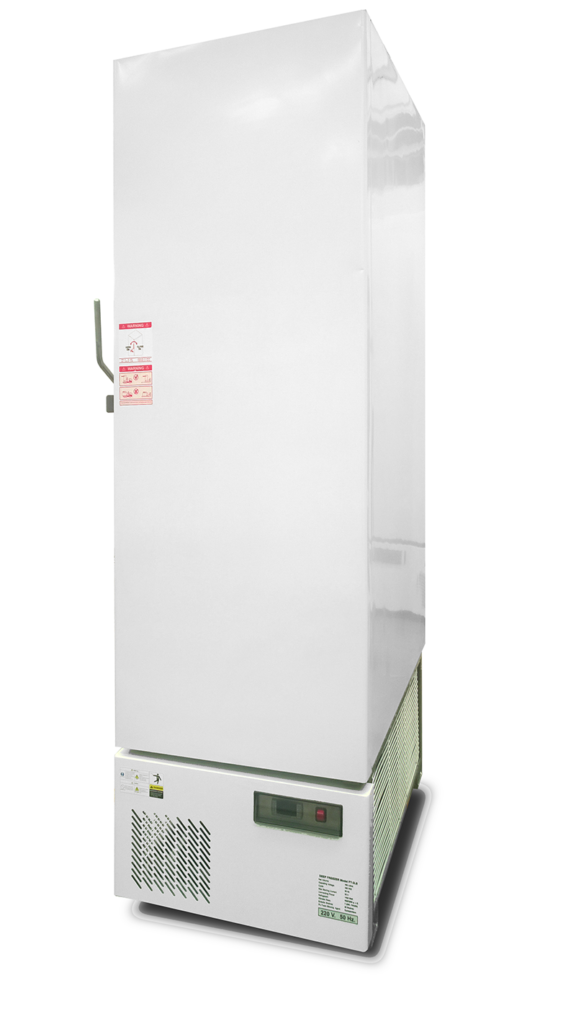 Cold chain logistics refers to the transportation and storage of temperature-sensitive goods, such as food, pharmaceuticals, and chemicals, under controlled conditions to maintain their quality, safety, and efficacy. A cold chain logistics solution typically involves various technologies, processes, and systems designed to keep products within a required temperature range throughout the entire supply chain.
Cold chain logistics refers to the transportation and storage of temperature-sensitive goods, such as food, pharmaceuticals, and chemicals, under controlled conditions to maintain their quality, safety, and efficacy. A cold chain logistics solution typically involves various technologies, processes, and systems designed to keep products within a required temperature range throughout the entire supply chain.
The specific details of each component of a cold chain logistics solution.
Cold chain logistics ensures the controlled and consistent handling of temperature-sensitive goods from their origin to the final destination, primarily to preserve product quality and safety.
- Temperature-Controlled Packaging
- Insulated Packaging:
- Purpose: Prevents temperature fluctuations and preserves product integrity.
- Types:
- Thermal Insulation (Expanded Polystyrene – EPS, Polyurethane – PU):
- Common materials for insulating packaging, keeping goods cool or frozen longer.
- Vacuum Insulation Panels (VIPs): Advanced packaging used for high-performance insulation with low thermal conductivity.
- Design Considerations: Must be customized based on product type (e.g., ice cream needs high insulation vs. pharmaceuticals requiring a controlled environment).

- Refrigerants:
- Gel Packs, Ice Packs, Dry Ice, Phase Change Materials (PCMs):
- Gel Packs & Ice Packs: Commonly used for chilled goods, they freeze at specific temperatures and melt slowly to maintain desired conditions.
- Dry Ice: Used for frozen goods, providing extremely low temperatures but requires special handling due to its sublimation into carbon dioxide.
- Phase Change Materials (PCMs): Materials designed to absorb or release latent heat during their phase change (e.g., from solid to liquid), offering precise temperature control.
- Gel Packs, Ice Packs, Dry Ice, Phase Change Materials (PCMs):
- Thermal Blankets:
- Function: Thermal blankets wrap the goods to protect them from external temperature variations during storage or transit.
- Types: Reflective materials (like aluminum foil) for heat protection or thicker insulation layers for high-performance cold chains.
- Temperature-Controlled Transport
- Refrigerated Trucks & Containers (Reefers):
- Refrigerated Trucks: These trucks come with built-in refrigeration units that maintain temperatures between -25°C to +25°C (depending on the product type).
- Temperature Zones: Advanced reefer trucks may have multi-zone cooling, allowing different temperature settings within the same container (e.g., frozen and chilled items can be transported together).
- Cold Chain Vehicles: Special vehicles like refrigerated airfreight containers (e.g., Cool Runners for aviation) and cryogenic coolers for extremely low temperatures (-60°C).
- Transport Temperature Control and Monitoring:
- Real-Time Temperature Tracking: RFID, GPS, and IoT-enabled devices allow for continuous monitoring of internal conditions during transport.
- Temperature-Controlled Vehicles: Refrigerated vehicles come with built-in temperature sensors, ensuring that data is collected and available for compliance.
- Emergency Protocols: Alarm systems trigger when temperatures go outside the desired range, prompting corrective actions such as rerouting or additional insulation.
- Air Freight:
- Specialized Units: For critical deliveries like pharmaceuticals, air cargo companies use temperature-controlled airfreight containers (Active or Passive). Active containers have built-in cooling systems, while passive containers rely on refrigerants.
- Cooling in Flight: Active containers use battery-powered cooling systems to maintain low temperatures, and passive containers use PCMs or dry ice.
- Cold Warehouses:
- Types of Cold Storage:
- Refrigerated Warehouses: Maintain temperatures for chilled goods (2°C to 8°C).
- Frozen Warehouses: Designed for storage at sub-zero temperatures (e.g., -18°C or lower).
- Climate-Controlled Warehouses: Maintain not just temperature but also humidity levels, especially for delicate items like pharmaceuticals and flowers.
- Types of Cold Storage:
- Cold Chain Warehouse Operations:
- Inventory Control: Automated systems (e.g., Warehouse Management Systems (WMS)) help track goods, ensuring that products are stored at optimal temperatures.
- Segregated Temperature Zones: Some warehouses have dedicated zones to handle specific temperature ranges or product categories, ensuring compliance with regulatory guidelines.
- Temperature and Humidity Sensors:
- Sensors: Continuous monitoring of both temperature and humidity is crucial, especially for products sensitive to both, such as certain drugs, fruits, and vegetables.
- Automatic Controls: In advanced warehouses, automatic Climate Control Systems (CCS) maintain optimal conditions by adjusting refrigeration or dehumidification based on real-time data.
- Track-and-Trace Technology
- IoT Devices for Monitoring:
- Internet of Things (IoT) Sensors: Devices equipped with temperature, humidity, location, shock, and vibration sensors are placed within packages or vehicles. They send real-time data to central systems.
- Data Loggers: Typically used for passive monitoring during transit, recording the temperature at intervals. Data is downloaded upon delivery.
- Connected Devices: Enable automatic alerts when conditions are not ideal (e.g., via SMS, email, or app notifications).
- Blockchain for Transparency:
- Blockchain Integration: Ensures transparency and traceability by creating immutable records for temperature-sensitive goods, helping confirm that the cold chain was maintained throughout the journey.
- Smart Contracts: Can trigger actions, like automatic reimbursement for damaged goods, based on predefined conditions.
- Digital Dashboards and Software Solutions:
- Monitoring Platforms: Real-time dashboards offer visibility for cold chain operators, allowing for proactive intervention before product quality is compromised.
- Predictive Analytics: Machine learning models predict disruptions in temperature control or potential delays based on real-time data, enabling risk mitigation.
- Inventory Management
- Real-Time Monitoring and Control:
- Cold Chain Software Solutions:
- Stock Control: Software solutions ensure proper stock rotation (FIFO or FEFO), preventing expired or spoiled goods from being shipped.
- Demand Forecasting: Helps to ensure that enough inventory is maintained in the cold storage and on vehicles while avoiding overstocking that could lead to unnecessary waste.
- Automated Alerts: If a product is nearing its expiration or storage conditions fall out of tolerance, the system sends alerts to inventory managers, triggering corrective actions.
- Regulatory Compliance
- Global Regulations:
- FDA (Food and Drug Administration), EMA (European Medicines Agency), WHO (World Health Organization): For temperature-sensitive pharmaceuticals, medical devices, and food products, regulations such as GxP (Good Distribution Practices) and GDP (Good Manufacturing Practices) ensure strict compliance with temperature requirements.
- FDA’s Drug CGMP (Current Good Manufacturing Practice) regulations demand that pharmaceuticals remain within the required temperatures throughout transportation and storage.
- Data Logging and Documentation:
- Temperature Logs: Legal and regulatory authorities often require companies to provide documentation of temperature control at various points of the cold chain. This is often done with electronic data loggers that record temperature readings.
- Audit Trails: Detailed reports provide a trail of compliance, ensuring products remain safe and intact and are traceable throughout the journey.
- Documentation for Customs and International Shipments:
- Export Certifications and Temperature Records: When crossing borders, cold chain products often need to pass inspections. Temperature records are part of the documentation for customs clearance.
- Risk Management and Failure Response
- Temperature Breach Contingency Plans:
- Emergency Response Plans: Companies must have clear protocols for managing temperature breaches, including rerouting shipments, adding extra refrigeration, or notifying customers.
- Back-up Power: Cold chain operations typically incorporate backup power sources (e.g., generators or uninterruptible power supplies) to protect goods during unexpected disruptions (e.g., power outages).
- Proactive Monitoring:
- Predictive Maintenance for Refrigeration Units: AI can forecast potential equipment failures based on historical data, preventing breakdowns before they impact the shipment.
- Diversion Alerts: For critical shipments, routing or delivery changes can be triggered automatically in the event of unforeseen delays.
- Emerging Cold Chain Technologies
- Blockchain in Cold Chain:
- Transparency and Security: Blockchain helps create secure, traceable records of the cold chain from production to delivery, with smart contracts automatically handling discrepancies.
- AI for Cold Chain Optimization:
- Predictive Logistics: Machine learning helps forecast temperature disruptions based on historical data and environmental conditions,
 optimizing the cold chain’s route and mode of transport.
optimizing the cold chain’s route and mode of transport. - Autonomous Vehicles: Drones and autonomous trucks may play a role in future cold chain solutions, ensuring precise temperature control with less human intervention.
- Predictive Logistics: Machine learning helps forecast temperature disruptions based on historical data and environmental conditions,
- Artificial Intelligence (AI) and Machine Learning:
- Optimizing Routes and Inventory: AI models can predict demand, optimize transportation routes for temperature control, and enhance efficiency in supply chains.
Conclusion
In summary, cold chain logistics requires a combination of advanced technologies, precise monitoring systems, regulated practices, and effective risk management strategies to ensure the safety, quality, and compliance of temperature-sensitive goods. It involves careful coordination across packaging, transport, storage, tracking, and compliance, making it a highly specialized and critical part of many industries, including pharmaceuticals, food and beverage, chemicals, and biotechnology.
